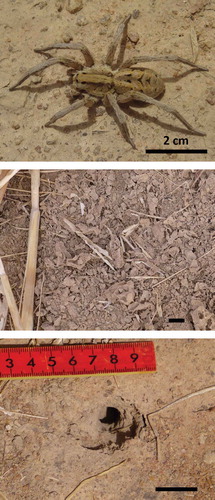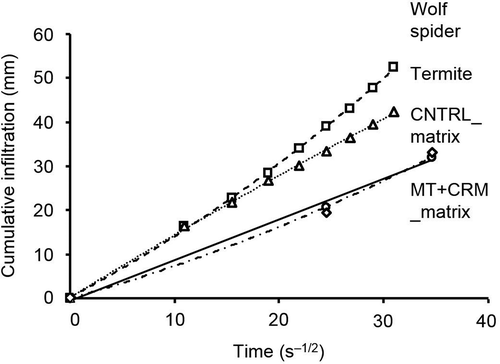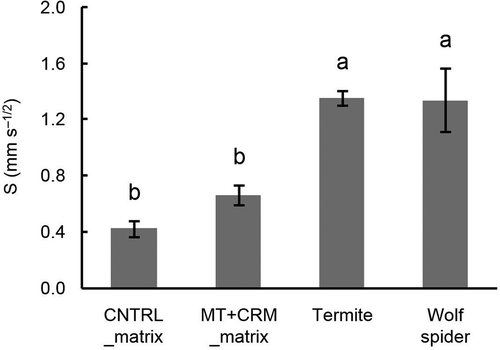Figures & data
Table 1. Physical properties of the soil from the experimental site.
Table 2. Chemical properties of the soil from the experimental site.
Figure 1. Photos of a wolf spider (top) and soil surfaces with the holes made by termites (center) and a wolf spider (bottom).

Table 3. Three-year average of annual soil loss, runoff coefficient, and sediment concentration for each treatment.
Figure 2. Temporal distribution of rainfall and cumulative soil losses for 2013–2015.

Table 4. Biomass of crop residues retained in the field after harvesting.
Figure 3. Soil permeability of matrix soils in the CNTRL and MT+CRM plots and of soils with holes made by termites and wolf spiders in the MT+CRM plots.

Figure 4. S in matrix soils of the CNTRL and MT+CRM plots and in soils with wolf spider and termite holes. S is the parameter called sorptivity that governs the early stage of water infiltration – an important parameter for water capture in semi-arid dryland systems.

